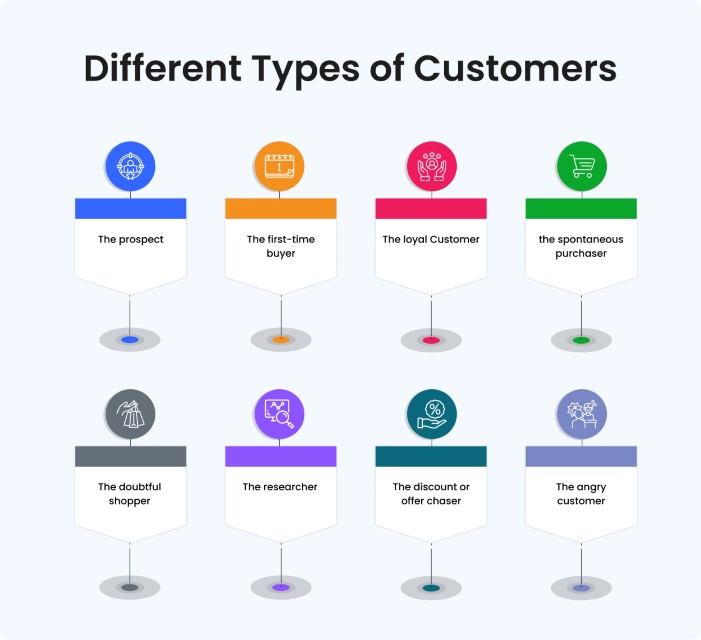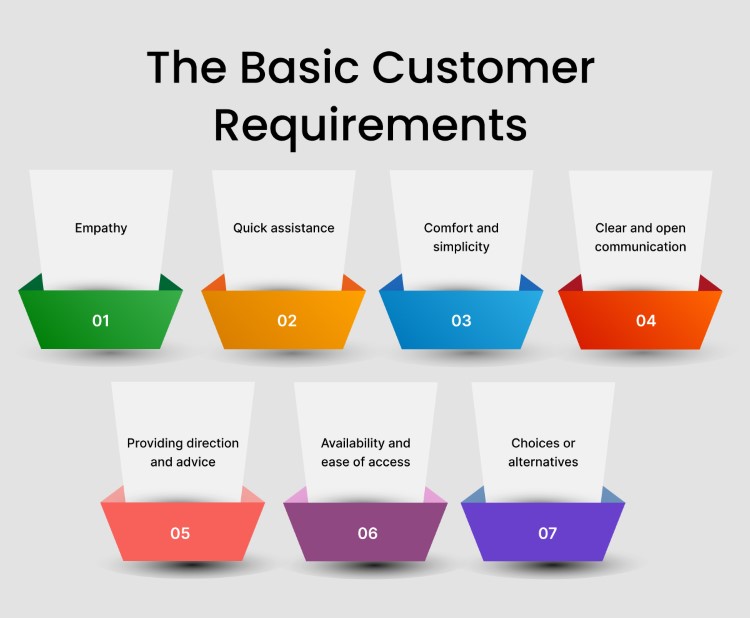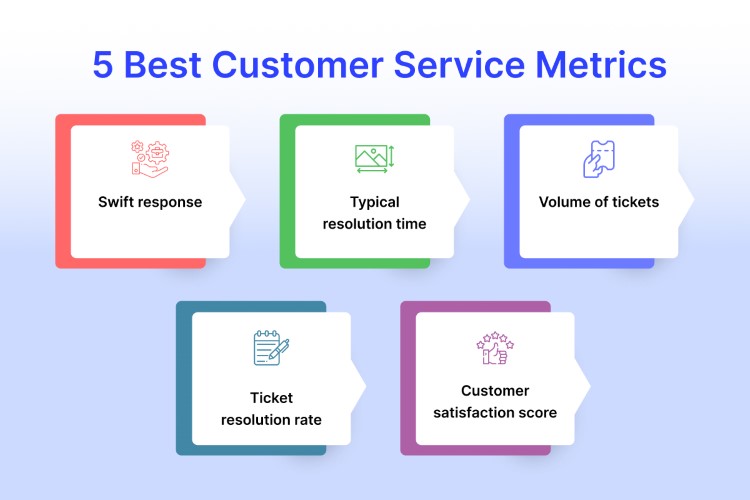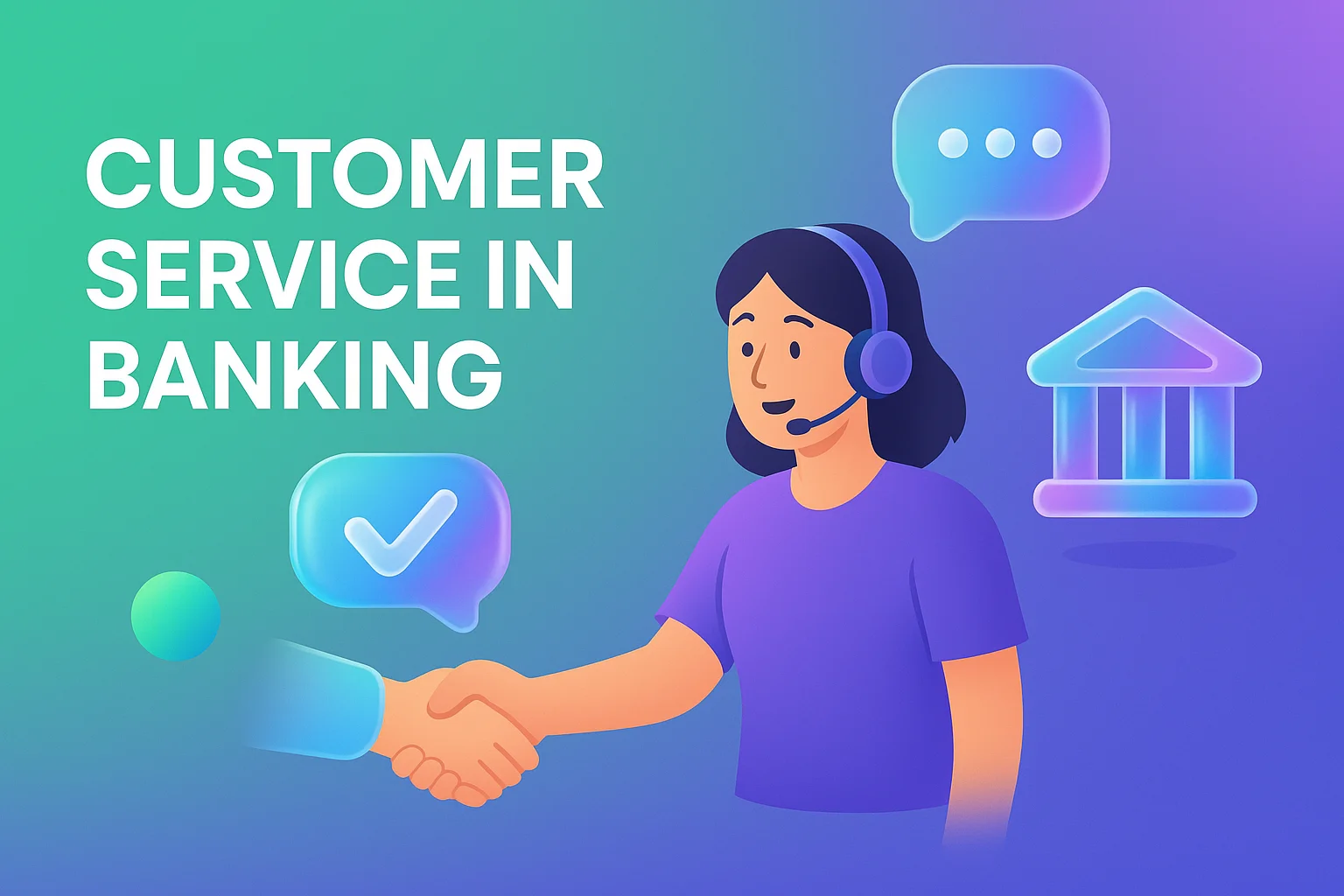A Comprehensive Guide to Customer Service Management
- July 25, 2023
- 17 mins read
- Listen

Customer service plays a crucial role in every company, and the quality of the experience can significantly impact your business. Whether you work for a Fortune 500 company with a dedicated customer success team or you’re the CEO of a smaller organization, customer service management is of utmost importance, regardless of your position within the company.
Now, where do you begin?
Establishing effective ways for customer management and information handling is really important. Additionally, ensuring customer satisfaction in how you deliver services is vital. Initially, managing the customer service needs of a small customer base may seem manageable for a new company. However, as your customer base expands, it becomes imperative to implement systems that can maintain excellent customer service levels. By formulating a comprehensive customer service management strategy early on, you set a high standard that allows you to consistently surpass customer expectations.
Fortunately, several tools and best practices are there that can streamline customer service management, benefiting both consumers and your team. So, let’s get started!
What is Customer Service Management?
First, make sure that your team members understand the real meaning of customer service management. As defined by Investopedia, customer service refers to the direct, individual interaction between a consumer and a company representative during a transaction. This pivotal moment plays a vital role in guaranteeing customer contentment, fostering repeat business, and ideally, prompting customers to advocate for your business both in person and on digital platforms.
Salesforce Research supports the significance of exceptional customer experiences, revealing that 73% of customers raised their expectations for other companies after encountering an extraordinary interaction with one company. This is particularly crucial in today’s digital era, where customers have easy access to alternatives and can easily switch to other providers.
Customer service management (CSM) goes beyond mere sales and centers on cultivating strong customer relationships. It entails seamlessly integrating customer experiences across all touchpoints and interactions. By prioritizing CSM, companies aim to provide top-notch support throughout the entire customer journey, ultimately leading to heightened customer satisfaction, increased repeat business, and a greater likelihood of customer advocacy.

Why Is It So Important?
Customer service plays a pivotal role as an essential component of the customer journey, significantly influencing satisfaction, experience, and loyalty. To meet customer expectations effectively, there are four fundamental requirements for customer support:
- Swift response times
- Dependable and thorough answers
- Omnichannel accessibility
- Friendly and personalized assistance with the brand
Every company knows about these customer expectations. However, you can easily fulfill these with a well-executed customer service management strategy. Moreover, customer service management holds significant importance as it directly impacts the following key business areas:
Efficient Company Operations
By implementing a well-structured customer service management system, you can effectively gather, organize, and analyze customer data. Understanding your customers’ needs and challenges enables you to categorize them into specific and targeted groups, facilitating the creation of tailored messaging and campaigns for various departments like marketing, sales, onboarding, and more.
Having easy access to all the necessary customer-related information empowers you to make informed business decisions, which is a valuable advantage.
Effective Time and Cost Reductions
Leveraging an intelligent customer service management tool like a chatbot can provide a competitive advantage by enhancing daily customer service operations and boosting customer win rates. This tool enables you to streamline communication and enhance flexibility, and accessibility through automation while delivering more personalized and rapid responses with comprehensive customer contextual knowledge.
By optimizing the support process, you can achieve significant time and cost savings, leading to a reduction in customer churn rates.
Enhanced Cross-Team Collaboration
By implementing an automation-based customer service management system like live chat software or chatbot, your customer support team can concentrate on essential tasks that demand human expertise. Automated workflows can handle specific assignments, allowing the team to work faster, with greater precision, and on a larger scale. Moreover, when all team members have access to the same toolset, they can seamlessly collaborate and share ideas, facilitating the resolution of customer inquiries and support requests more efficiently.

Mastering Customer Service Management: Strategies
Fostering customer loyalty and enhancing employee engagement within your customer service team demands ongoing dedication. The following customer service management strategies empower agents and implement agile processes in your department, leading to better results:
Set Clear Objectives and Rewards
Setting customer service management objectives enables your teams to gauge their performance, leading to heightened engagement and enhanced employee satisfaction, which are crucial aspects of success.
It is equally important for your support agents to comprehend how each objective aligns with the broader business requirements. By establishing a clear connection between individual and team goals and the company’s overarching objectives, your agents can better recognize their contributions to the organization’s overall success.
Burnout remains a significant concern in customer service; however, providing regular positive reinforcement can have a profound impact. Establish clear guidelines for how frequently you intend to acknowledge your agents’ efforts and be diligent in identifying and celebrating remarkable achievements.
Regular Training for Your Team
Incorporating and retaining a skilled team should be a fundamental pillar of every customer service management strategy. While it is essential to recruit talented agents, their growth and development should not solely rely on on-the-job experience.
To elevate customer service skills, design a comprehensive customer service training plan that aligns with agents’ role-specific goals and objectives. Let them access important training resources, including:
- Enabling self-guided learning through knowledge bases
- Access to online courses for assessing aptitude
- Conducting workshops to reinforce customer service best practices and refine agents’ voice and tone
- Offering mentorship opportunities with senior members for real-time guidance
- Supporting agents’ attendance in external conferences or certification courses to enhance their hard skills and expand their expertise
By providing these opportunities, you can enrich your training program, strengthen your talent pool, and create a pathway for upward mobility within your organization.
Ensure Speedy Resolutions Across Various Channels
Offering limited communication channels for your customers may streamline your agents’ tasks, but it can also result in bottlenecks, leading to subpar service. For instance, if customers can only contact support through phone calls, extended wait times are probable. Embracing multiple channels enhances response times and allows customers to select the best medium as per their preferences.
To achieve the best results in your customer service management, consider implementing the following:
- Live chat
- Chatbot
- Social media platforms like Facebook, Viber, Instagram, etc
- Messaging platforms like WhatsApp
- Web calls
- Email communication
Explore the Possibilities of AI and Self-Service
Seek opportunities to minimize mundane tasks, enabling your agents to concentrate on more crucial work. AI can play a pivotal role in alleviating the workload and offering cost-effective customer insights through the following means:
- Chatbots can deliver automated responses to basic inquiries and route complex customer issues to your human support agents.
- AI algorithms can provide personalized recommendations by analyzing important customer details.
- Analytics software can identify patterns in customer behavior and predict their future needs.
- Integrated Voice Response (IVR) systems use voice commands to guide customers to the appropriate support representatives.
The self-service portals play a significant role in reducing ticket volume as they empower customers to find solutions independently. Agents collaborate to publish helpful content, such as articles, guides, manuals, and tutorials, to provide customers with the necessary information they seek.
Personalize Customer Interactions
Many of us have encountered instances of inadequate customer service, where the agent seems unaware of our history with the organization. This lack of knowledge gives the impression that they are eager to conclude the interaction swiftly, regardless of whether the outcome is positive or not.
Implementing personalized service is essential to avoid customers feeling neglected. Develop customer profiles that encompass purchase history and demographic information, enabling your agents to refer to these details and offer tailored support. By doing so, customers will feel valued and understood, while your agents can utilize this information to enhance issue resolutions and overall satisfaction levels.
Research and Learn from Best Practices
By researching and learning from best practices, you can continuously improve your customer service management approach, enhance customer satisfaction, and build stronger relationships with your customers. Here are some important tips to consider:
- Analyze companies known for providing excellent customer service and study their strategies, policies, and customer-centric approaches.
- Compare your customer service performance against industry leaders and top-performing competitors to identify areas for improvement.
- Regularly collect and analyze customer feedback to gain insights into their experiences and discover areas that require enhancement.
- Map the entire customer journey to identify pain points and opportunities for improvement in the customer service process.
- Engage in networking with other customer service managers to share experiences, learn from each other’s successes and challenges, and exchange best practices.
- Stay informed about the latest trends, technologies, and customer service tools to ensure you are using the most effective methods available.
Collect Real-Time and Historical Insights
To enhance your service, you have the capability to monitor and analyze the customer interaction cycle with your company. Real-time monitoring enables managers to participate in conversations and promptly address any concerns observed. Live chat and chatbot provide you with important analytics related to your website visitors, customers, past interactions, their geographic locations, and many more to understand your target audience in a better way.
Additionally, preserving call logs allows you to conduct later reviews, identifying trends and patterns. By examining website heat maps, you can pinpoint the areas that attract your customers’ attention, leading to layout optimization for better results.
Your customer data is another valuable resource that can be harnessed to create a comprehensive understanding of the customer journey and offer insights on how to elevate your performance.
Opt for Customer Feedback
Having a customer feedback loop helps you to identify problems with your offerings through their comments and suggestions. By actively seeking and implementing customer feedback, it becomes possible to enhance customer retention by meeting their needs and addressing issues before they escalate. However, one common mistake many companies make is that they implement the changes as per the feedback and stop following up on the outcomes.
To ensure the effectiveness of improvements, it’s crucial to reach out to the customer and inquire whether the process has been improved or if the issue has been completely resolved. In cases where issues persist, further investigation may be required to address them adequately. The feedback loop thus becomes a valuable tool for continuous improvement and ongoing customer satisfaction.

Optimizing Customer Service Management: Building an Effective Team Structure
Now that you have understood your customers and the fundamentals of a customer service management system, it’s time to structure your team effectively. To build a successful customer service team and enhance performance, follow these three main steps:
Bring the Right People with the Right Skills
Delighting customers requires the right people on your team, and it goes beyond just anyone. Customer service representatives must possess a skillful blend of soft and hard qualities to work with your consumers and represent your brand effectively. In addition to empathy, a positive attitude, patience, kindness, and active listening, are just a few essential qualities among many others that make up this critical mix.
To begin with, develop a suitable customer support agent persona that aligns with your target industry and incorporate it into your talent acquisition process. Pay careful attention to recruitment and employ various techniques to evaluate potential candidates. You can opt for the assessment center method or give appropriate role-playing scenarios to the candidates to uncover their genuine traits and capabilities.
Organize Your Team into Primary and Secondary Lines
Once you are done with the customer service management responsibilities, it’s important to delegate tasks to your specialized first and second-line service staff members. If you are the support manager, you must know the distinctions between these two support lines.
In your organization, you can establish multiple support lines, but each subsequent line should be more specialized and technically adept. This approach allows for smooth escalation of customer cases and facilitates constant communication with other departments.
Additionally, ensure fair distribution of work hours among your team members. Responsibly schedule the night or holiday shifts to avoid excessive overtime and maintain a healthy work-life balance for your staff.
Identify Key Roles
Each support line should have at least one manager as they play a vital role in managing the overall performance and serving as the spokesperson for support agents. It is essential to differentiate access to information and features in your customer service tools to align with the distinct roles of agents and managers. This distinction ensures that each team member has the appropriate access and capabilities required to fulfill their respective responsibilities effectively.
Discover the Power of Technology in Customer Service Management
In the present day, our world is highly interconnected and digitally oriented. Research shows that a significant majority of Americans, approximately 81%, use smartphones, 52% own tablets, and 74% utilize desktops or laptops. As a result, consumers have constant access to your business, as well as your competitors, across various devices, 24/7.
Given this context, technology investments have become more crucial than ever before. To stay competitive and effectively cater to customer needs, businesses must prioritize strategic technological advancements and innovations.
Let’s take a brief look at each of these six technologies and understand how to integrate them into your company’s customer service efforts.
1. CRM Software: Strengthening Customer Relationships
Utilizing a CRM as the customer service management software is a robust method to effectively manage your valuable leads and contact details of customers. Particularly for larger companies with various departments such as sales, marketing, and support, efficient customer information management is crucial. A well-structured CRM system allows your team to keep track of all the customer interactions, sign-ups, subscriptions, purchase details, etc. all of which are vital for maintaining effective customer correspondence.
2. Harnessing the Potential of Marketing Automation
Be proactive with your customer service by connecting your marketing system to your customer support. This allows you to set up automated email or even SMS messages to welcome new customers with helpful blog articles, tips, user manuals, or answers to FAQs.
Numerous automation platforms come equipped with analytics and reporting features, enabling A/B testing of messaging and personalized product recommendations. When you integrate marketing with customer service, you establish a continuous engagement with your customers. This seamless connection allows for data-driven improvements and customized interactions, fostering stronger relationships with your customer base.
3. Seamlessly Managing Customer Interactions Across Channels
Regardless of the channel customers use to seek support, they desire a seamless experience where the person on the other end comprehends their entire situation. Omni-channel workflow enables you to link your customers’ support tickets across various channels.
Therefore, if a customer contacts your service team through social media platforms and email for the same issue, the support team member gets to know about it including the customer’s past history with your company. This cohesive approach ensures a more efficient and satisfying support experience for your customers.
4. Enhancing Customer Support with AI Chatbots and Live Chat
A chatbot is an application that mimics human conversation, either through speech or text messaging. Instead of engaging with a person, like a customer service agent, customers can converse with a computer. Chatbots can assist by answering queries, such as checking the order history, its status, or product availability, whether through typing or voice communication.
Moreover, chatbots enhance agent productivity by addressing customer inquiries or gathering information, like order details, even before an agent intervenes. This significantly reduces the time it takes for an agent to resolve a case. Besides streamlining communication, chatbots can also serve as a means to encourage users to subscribe to newsletters, blogs, latest deals, and generate more qualified leads. They are a valuable tool in improving customer service efficiency and promoting engagement with users.
Apart from a chatbot, live chat software is also there that lets your support team see website visitors in real-time and proactively reach out to them to offer instant assistance much before they even ask for it.
Here at REVE Chat, you will get both live chat solutions and the AI-based chatbot that can take your customer service to a completely new level. From proactive chat to analytics, from agent activity to customer details REVE Chat has vast features to choose from.
REVE Chat offers a 14-day free trial to try all its advanced features. Want to give it a try? SIGN UP today.
5. Leveraging Social Media for Improved Customer Engagement
Social media provides a cost-effective and straightforward way to utilize technology for managing customer service. Depending on your business size and the customer base you cater to, there are various approaches you can adopt to get started with. Here are a few examples to look into:
- Utilize Twitter direct messages (DMs) to assist customers privately on a platform they are already using.
- Leverage social channels to post new updates related to your support service that reaches all of your followers.
- Share simple ‘how-to’ content or user manuals on your social media channels, and link those comprehensive support articles or videos on your website when in-depth guidance is needed.
While using social media, carefully assess which platform(s) align best with your needs. Take into account factors such as the strength of your following on each platform and the preferences of your customers.
Meeting your customers where they are already active is vital, as it facilitates easier engagement with your business. Moreover, recognize that each platform possesses its unique strengths: Twitter is for short and news-like updates, Instagram is for visual content centered around images and videos, and LinkedIn is more professional and used to share B2B kind of content.
As with any customer service channel, it’s crucial to establish clear guidelines. Determine who on your team can address customers on social media and outline procedures for handling various issues that may arise. Maintaining consistent and efficient customer service across social media is essential for fostering positive interactions and reinforcing your brand’s reputation.
6. Empowering Communication with Video in Customer Service
Utilizing videos can be an effective means of establishing a more personal connection with your customers. Your customer service team can create educational videos to introduce users to your products and offer solutions for common issues. Additionally, depending on your company and industry, videos can be a fun way to showcase your brand’s personality.
For example, you have the opportunity to lead viewers on a video tour showcasing your product or service while offering a glimpse of your office’s behind-the-scenes activities. This allows you to infuse your brand with a personal touch, proactively answer queries, and connect with potential leads and customers using a widely enjoyed and captivating medium.
Moreover, as technology continues to advance, you can take this engagement a step further by incorporating audio-to-text converters, which allow you to seamlessly transform spoken words from your video into written content. A fun way to do this is by turning your customers’ most asked questions into short and fun FAQ videos, creating a multi-faceted experience that caters to different learning preferences. Your team probably knows or can easily learn how to convert audio to text to help enhance your customers’ engagement with your content and tap into the power of both visual and textual mediums to convey your message effectively.
By adopting this method, you not only improve customer service management but also fortify your brand identity and cultivate favorable interactions with your target audience.

Building Blocks for Your Business Growth
Regardless of whether you have a single customer or a thousand, addressing customer needs is of utmost importance. While technology can aid in implementing or enhancing customer service, having effective strategies is very important. In today’s digital age, customers freely express their opinions online through social media and review platforms, as well as offline with their near and dear ones.
Therefore, you have to prioritize customer service, as both your customers and competitors value it a lot. There is no doubt that you always want to maintain a good reputation for your brand and here your most valuable asset is a satisfied customer.



